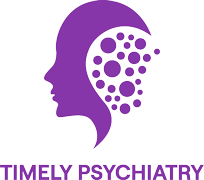Supporting a friend or family member with PTSD can be daunting. You might feel lost, unsure of what words to use or actions to take. We offer straightforward advice on how to help someone with PTSD every day. You’ll see what PTSD is. You’ll spot its signs. Then, you’ll learn kind ways to bring hope and healing.
What is PTSD?
PTSD stands for post-traumatic stress disorder. It is a way the mind reacts after a scary or painful event. A person with PTSD may:
- Remember the event again and again in their mind.
- Have bad dreams or nightmares.
- Feel very jumpy or nervous.
PTSD is a real condition. Some people wonder, Is PTSD a disability? It can make working, studying, or handling daily tasks hard. But with help, most people learn to feel better.
Stages of PTSD
Experts often describe PTSD in four stages of PTSD. Knowing these PTSD stages helps you give the proper support at the right time:
- Re-Experiencing: The person relives the trauma in their mind.
- Avoidance: They steer clear of thoughts, people, or locations that bring up the incident.
- Arousal: They feel alert, tense, or have trouble sleeping.
- Negative Changes: They may lose interest in fun activities and feel alone.
Understanding how to help someone with PTSD stages means you watch for each step. Then, you can offer comfort that fits their needs.
Common Triggers
A trigger is something that brings back stress. Common triggers include:
- Loud noises, like fireworks or cars backfiring.
- Smells, such as strong perfumes or fuel.
- Seeing a place similar to where the trauma happened.
Knowing triggers helps you guide your friends away from them. You might say, “Let’s move to a quieter spot,” or “We can turn down the music.”
Can PTSD Cause Panic Attacks?
Yes, it can. A trigger might spark a rush of fear. You can help during a panic by:
- Staying calm and speaking softly.
- Encouraging slow, deep breaths: “Breathe in… two… three… out.”
- Using grounding: “Name three things you can see right now.”
These steps show them how to help someone with PTSD panic attacks and bring them back to safety.
Can You Prevent PTSD From Getting Worse?
While you cannot stop all trauma, learn to can you prevent PTSD reactions from growing? Try:
- Plan meals and bedtimes each day.
- Coping skills. Teach simple tools like counting breaths or stretching arms and legs.
- Positive talk. Remind them, “You are safe now. I’m here.”
Small habits help build strength and keep hard memories from taking over.
Practical Tips: How to Help Someone with PTSD
- Listen and believe. Say, “I’m here to listen, and keep your face gentle”.
- Use kind words. “I trust you,” or “That sounds so hard.”
- Offer choices. Ask, “Would you like to sit or walk?” Let them feel in control.
- Stay near. If they need quiet company, sit close but don’t hover.
- Plan small fun. A short walk, sketching, or a simple game can ease the mind.
These fundamental steps show how to help someone with PTSD feel seen and safe.
Treatment Options for PTSD
If symptoms persist, professional treatment is essential. Evidence-based approaches include:
-
Cognitive-Behavioral Therapy (CBT)
Reframes negative thoughts from trauma. Teaches coping strategies for triggers and reactions. Structured sessions in a safe space.
-
Eye Movement Desensitization & Reprocessing (EMDR)
Reprocesses traumatic memories through guided movements. Reduces emotional pain. Helps those who can’t verbalize trauma.
-
Medication Management
Antidepressants ease anxiety, depression, and mood swings. Anti-anxiety meds provide short-term relief. Regular psychiatrist follow-ups adjust dosages and track progress.
Key Benefits of Combined Care
- Therapy addresses root causes; medication stabilizes symptoms.
- Personalized plans improve daily functioning and emotional resilience.
- Professional guidance ensures safe, gradual healing.
Supporting these treatments with patience, routine, and empathy amplifies recovery.
Self-Care for You
It can be challenging to assist someone who has PTSD. You also need to rest:
- Talk with others. Share feelings with a friend or support group.
- Take breaks. Do things you love, like reading or a hobby.
- Set limits. It’s okay to say, “I need a few minutes alone.”
Caring for yourself gives you more strength to offer real support.
Additional Resources
- Support groups. Local or online meetings for people with PTSD and their helpers.
- Numbers you can call any time, like 988 in the United States.
- Books and apps. Simple guides for breathing, calm, and tracking moods.
Pointing your friend to these tools shows how to help someone with PTSD even when you’re apart.
Conclusion
Learning how to help someone with PTSD takes time, but every kind of word matters. You can:
- Understand what PTSD is and its common signs.
- Spot PTSD stages and handle panic.
- Build routines and share coping tools.
- Encourage therapy and healthy self-care.
At Timely Psychiatry and Family Health, we offer expert care through proven treatments like CBT and EMDR and personalized medication management. Reach out today to start your recovery journey.
Your gentle support can light a path from fear to hope. Remember, small daily steps bring healing and show your friends they are not alone.
FAQs
-
Is PTSD a disability?
It can be. If it stops someone from working or learning, it may count as a disability. But many people get better with help.
-
Can PTSD get better?
Yes. Therapy, medicine, and kind support all help. Small steps each day bring strength and hope.

